The Lexington Monument exists today because a group of citizens recognized the importance of a permanent memorial to the fallen men of April 19, 1775.
In 1834, led by John Upton, a committee was formed make it happen. The local community responded with generous individual donations – ranging from $1 to $15. Philanthropist George Peabody donated the final $100 to make sure the monument was completed.
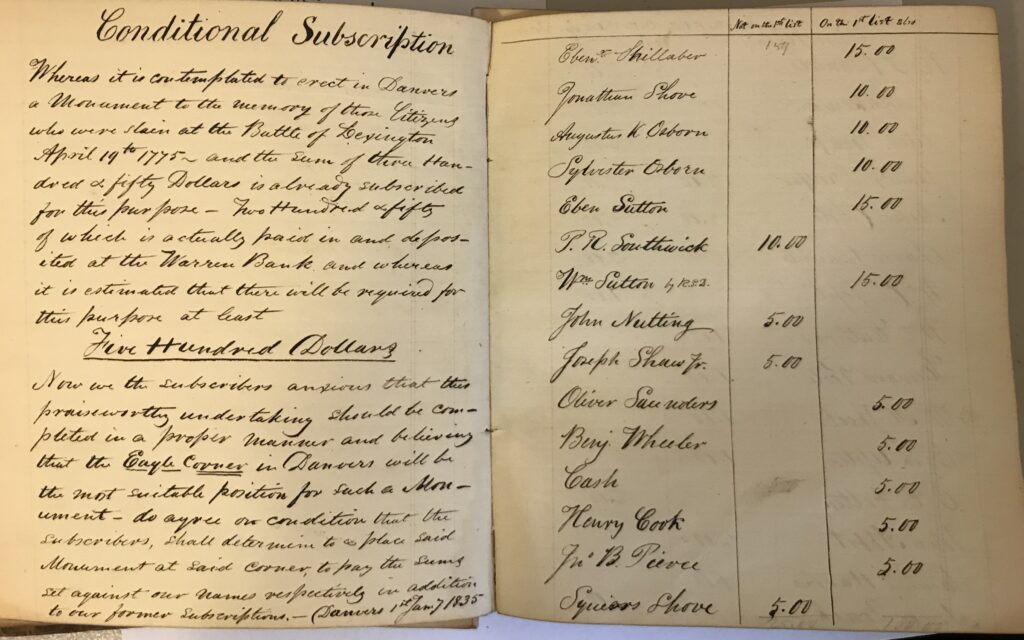
From the Collections of the Peabody Historical Society and Museum
The corner stone of the monument was laid on Monday, April 20th, 1835 – the 60th anniversary of the Battle of Lexington.
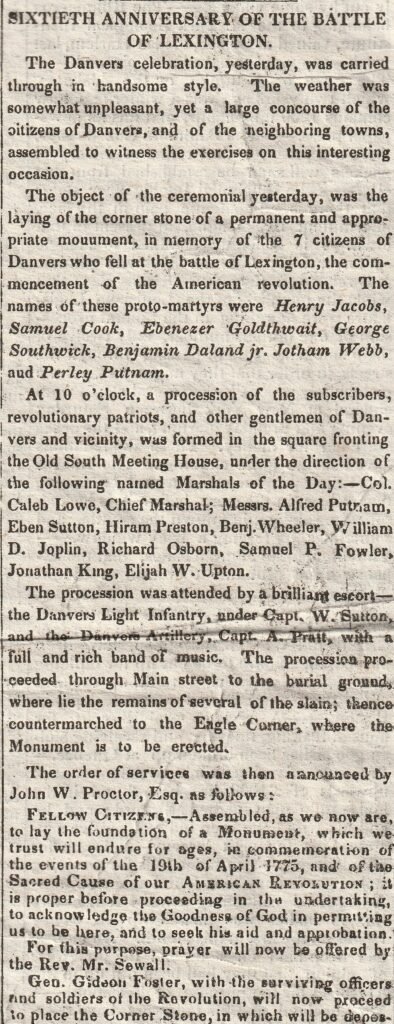
From the Collections of the Peabody Historical Society and Museum
19 men, who had fought in the Battle of Lexington, were present at the ceremony. These surviving soldiers placed a box under the cornerstone, containing memorial items and documents. Of these men, 12 were from Peabody and Danvers: Gideon Foster, Sylvester Osborne, Johnson Proctor, Levi Preston, Asa Tapley, Roger Nourse, Joseph Shaw, John Jocelyn, Ephram Smith, Jonathan Porter, Joseph Tufts and William Flint. The remembrances concluded at the Old South Church, which was overflowing with people.
The monument is made of stone quarried off Summit Street. The Brown family quarried and cut the stone. The monument was designed by Asher Benjamin.
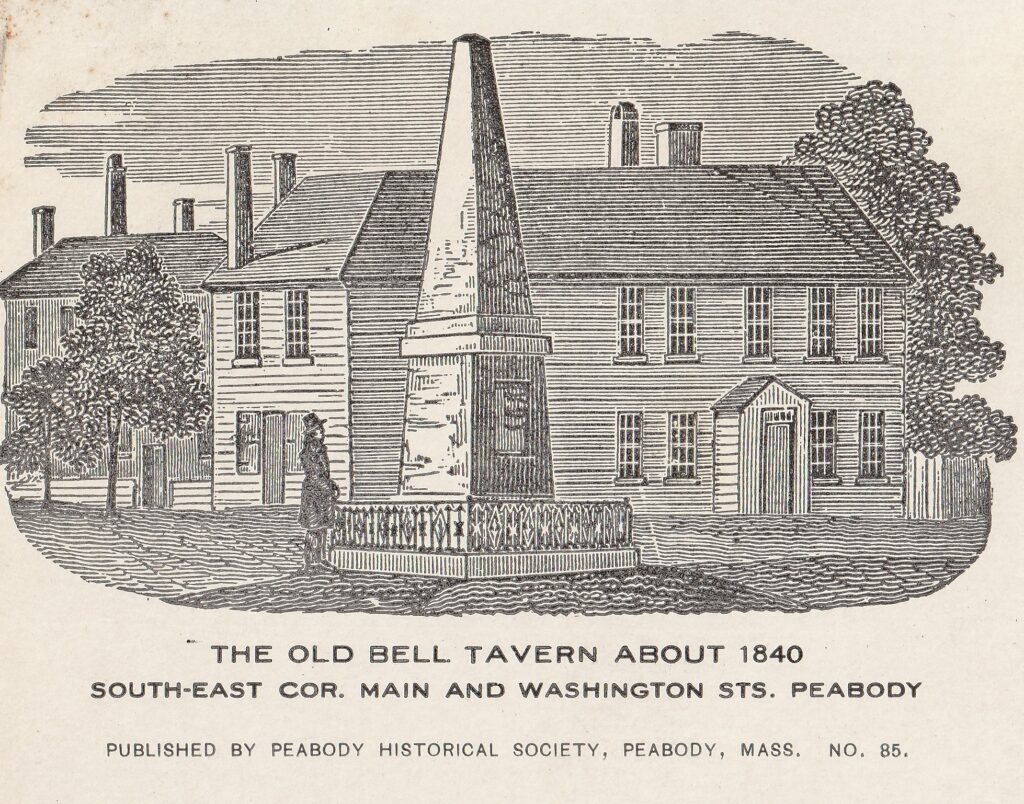
From the Collections of the Peabody Historical Society and Museum
On the 100th Anniversary of the Battle of Lexington, another large ceremony took place. General Ulysses S. Grant, then President of the United States, attended the event. A group of Peabody and Danvers men retraced the steps of the minutemen and marched to Lexington.
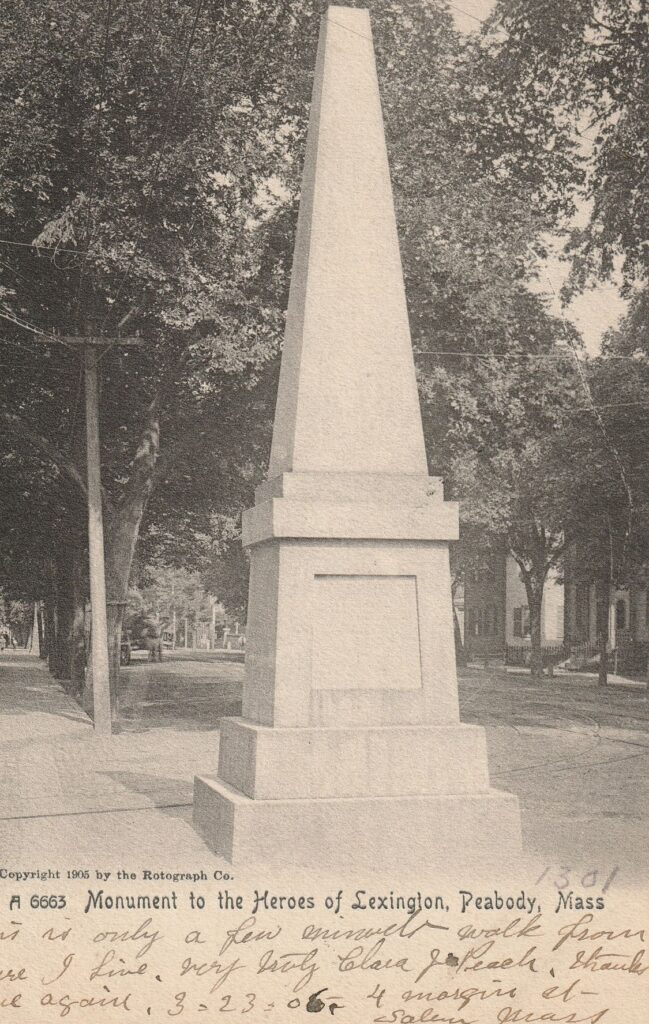
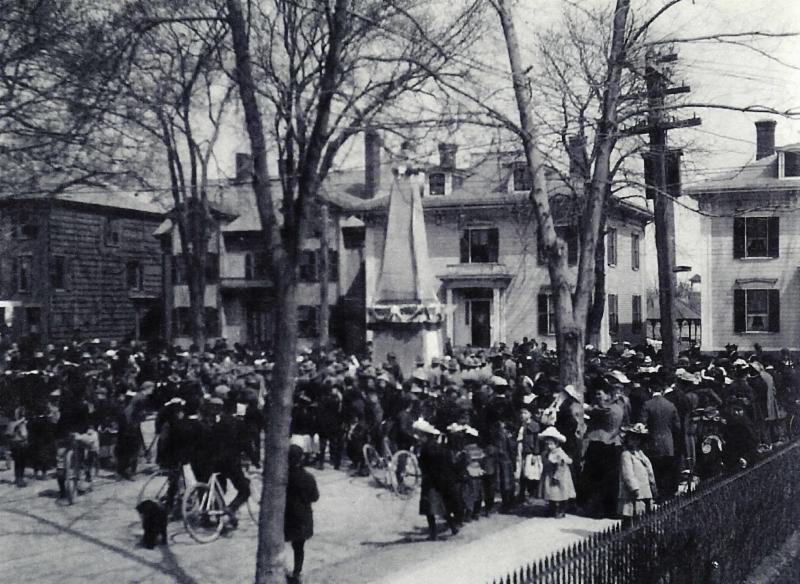
From the Collections of the Peabody Historical Society and Museum
The Lexington Monument stood at its original location until 1968. There was a serious automobile accident in 1964, where the driver lost control of his vehicle and crashed into the monument. Many grew concerned over the monument’s proximity to the busy street. It was moved back a few yards in 1968, but still posed an issue.
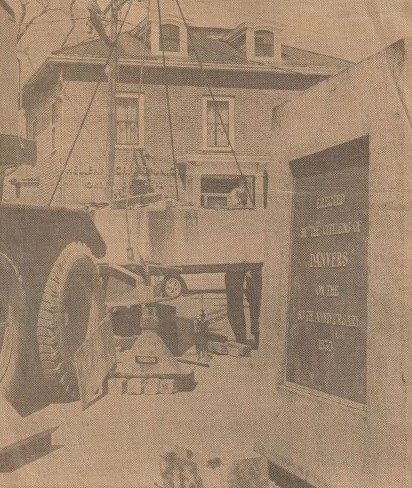
From the Collections of the Peabody Historical Society and Museum
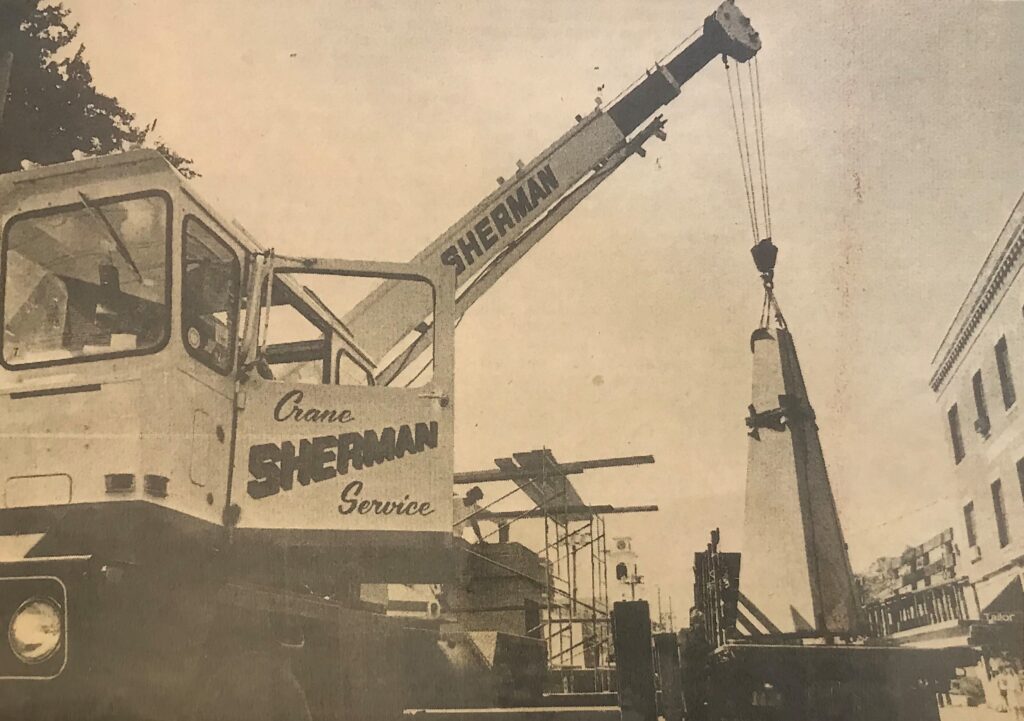
August 29, 1985 / Photographer: John Hurley
From the Collections of the Peabody Historical
Society and Museum
The City of Peabody wanted to relocate it but struggled to find an appropriate spot. There were multiple ideas, including moving it to Cedar Grove Cemetery. Ultimately, it was moved back 25 feet to its current location at the corner of Washington and Sewall Streets on August 29, 1985.
Reference Material: John A. Wells, The Peabody Story, Essex Institute, 1972, Pages 212-231.
